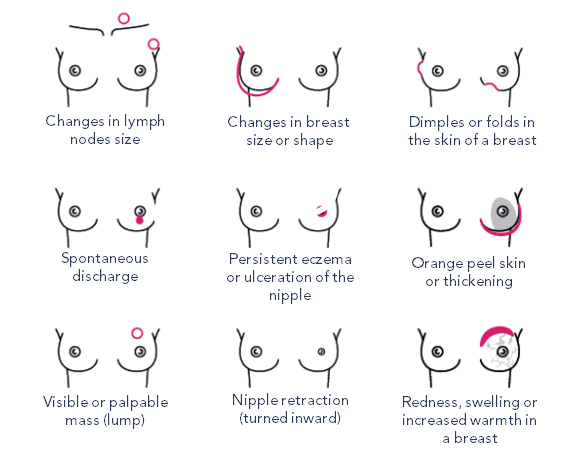October is Breast Cancer Awareness Month. To mark the occasion, the Quebec Breast Cancer Foundation is recommending the following best practices for breast health.
Know your risk factors
One of the main risk factors is the effect that some female hormones, particularly estrogen, may have in promoting the development of certain types of breast cancer. Consequently, anything that can increase the amount of estrogen in the body or increase the length of time the body is exposed to estrogen is also a risk factor.
This increase in estrogen or in the length of exposure to estrogen can be triggered by early menstruation, taking oral contraceptives, a late first pregnancy or no pregnancy at all, not breastfeeding, late menopause, prolonged treatment with hormone replacement therapy for menopause, obesity and alcohol consumption.
Other risk factors can be divided into two categories: factors that cannot be changed (hereditary factors) and factors that can be changed (factors that we can influence). The main risk factors are presented below:
Risk factors that cannot be changed (hereditary factors)
-
Being female
-
Aging
-
Personal history of breast cancer
-
Family history of breast cancer
-
Genetic mutations (BRCA1, BRCA2, etc.)
-
Early menstruation (before the age of 12)
-
Late menopause (after the age of 55)
-
High breast density
Risk factors that can be changed (lifestyle factors)
-
Alcohol consumption
-
Obesity (especially among postmenopausal women)
-
Sedentary lifestyle (lack of physical activity)
-
Early exposure to ionizing radiation (for example, having received radiation therapy)
-
Hormone replacement therapy
-
Late first pregnancy (after the age of 30) or no full-term pregnancy
Breast observation
Be aware that it is normal for your breasts to change over your menstrual cycle. For example, they may become lumpier just before your period. Breast tissue also changes with age. Knowing how your breasts normally look and feel allows you to talk with your doctor if you notice anything out of the ordinary.
A few years ago, doctors taught the breast self-exam, which is a precise method for observing any changes. However, recent research has shown that using one method over another isn’t necessary. The important thing is for every woman to be familiar with her entire breast area, including her nipples, collarbones and armpits, so she can detect what is normal and what is not.
In general, most changes detected when palpating the breast are not cancerous. For example, it may be normal for your breasts to have small lumps or to be more tender before your period. But stay alert to any persistent recent changes and, if in doubt, consult your doctor.
If you notice a change in your breasts, contact your family doctor or call the Quebec Breast Cancer Foundation at 1-855-561-ROSE.

© Quebec Breast Cancer foundation
Undergoing mammography screening
At the age of 50 (and every two years thereafter), all women in Quebec receive a letter in the mail inviting them to take part in the Québec Breast Cancer Screening Program. Studies have shown that mammography screening reduces breast cancer mortality in women aged 50 to 69.
The number of breast cancer cases is higher for women in the 50 to 69 age group. In fact, the majority of breast cancer cases occur in women 50 years of age and older. The main health authorities, including the Quebec Breast Cancer Foundation, therefore recommend that women aged 50 to 69 have a mammogram every two years.
If you are under 50, your doctor may still recommend you have a mammogram at regular intervals because your personal risk is above average. If you haven’t already done so, talk with your doctor about your risk factors and the pros and cons of having a mammogram at your age.
If you are 70 or older, ask your doctor how often you should have a mammogram.
It is possible for breast cancer to start developing in the two years between mammograms. However, regular breast observation increases the chances of the cancer being detected before the next mammogram. Adopting this best practice also increases the chances of finding the cancer when it’s still small and therefore easier to eliminate.
Healthy lifestyle habits
Certain actions and lifestyle factors can reduce the risk of breast cancer.
Physical exercise: Studies have demonstrated a link between regular physical activity and a reduced risk of developing breast cancer. More than four hours a week of high-intensity physical activity reduces your risk. The effect of exercise on breast cancer risk may be greater among premenopausal women who are overweight.
Alcohol consumption: Drinking even small amounts of alcohol increases the risk of developing breast cancer. It is recommended to limit alcohol consumption to one drink per day for a maximum of five days per week.
To learn more about breast health, visit rubanrose.org/en/.





 Canada (EN)
Canada (EN)
 Global (EN)
Global (EN)








